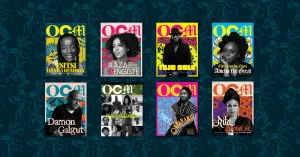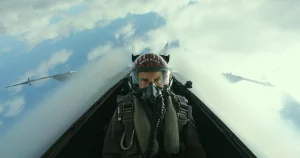1.
When I write prose fiction and poetry, the sparks that birth my words ignite from within, a thing riotous and chaotic, kindling and kindling until cooled, but when I sketch essays or anything else, it all begins with a small, calm flame outside of me, a gathering glow out there in the world. Mornings, evenings, I take walks, on still-sleepy streets, on bubbling roads, in wild bushes, my mind ajar, ears open, eyes searching, all my senses in brazen awareness. On these walks, I am alert to the forms that my sparks of inspiration might assume: the slide of a drop of dew off a lemon leaf, the unsettling slither of an invisible animal in the grass, the tilt of a palm tree bending in the wind, the waning gold of dusk light, an excited child scampering along the sidewalk with a wrap of roasted corn, the blinking headlamps of a foul-mouthed driver’s vehicle, the low coo of a blue-plumed bird. Without walking, without immersing myself in the rawness of the world, I do not write. I can, but I don’t, because there’s something deepening about tossing ideas in your mind on a stroll, about knowing that the sight of a squirrel on the run might be all your story needs to set its feel, its tone, its life.
2.
In 2009, when I began paying attention to literature, it was poetry that I first wrote: politics poetry, love poetry, rain poetry: a phase of stimulation sown by J.P. Clark’s “Agbor Dancer.” Then one afternoon, Isidore Okpewho’s The Last Duty made me want to write prose, but instead I began a diary, until July of 2012 when I read Chimamanda Ngozi Adichie’s Half of a Yellow Sun and finally decided to write seriously, and then began my first short story that August, then left it, then completed my first full one in October, then showed it to only one person, then finally, after beginning Purple Hibiscus, I made my first confident attempt, a four-page baby called “Small Things.” In March of 2013, I stumbled onto Kaine Agary’s Yellow-Yellow, a novel partly set in Aba where I grew up, whose prose style was instantly attainable and so eased me in. Yellow-Yellow was a turning point: it gave me permission to write.
3.
I have a complex, overlookable relationship with the word “writer.” I don’t consciously think myself a Writer. What I think is Storyteller, because before I ever knew I would write, I told stories, recitations of grand historical events that usually had my family and friends still and entranced, and so I think myself a storyteller who happens to have found his expression in writing, who had he chosen painting would still tell stories with his brush strokes.
I first read, then I wrote; I read now, then I write. And it helps greatly that I am widely and wildly interested in Things. Artsy Things. All Things. History. Physics. Religion. Biographies. Nature. Mathematics. Music. Movies. Barbing and carpentry. Diversity that grants me a flexibility of imagination, offers unrestrained utility in my writing. My writing life is hemmed around this trajectory: Reading all and reading deep, reading and pausing, reading and re-reading, pondering why the author chose a comma rather than a semi-colon, why the author refused to close a sentence soonest, chose to let it run and run, on and on, like a cultured snake. This way, I learn the magic of words, and I learn the rhythm of meaning, and I learn the truth of stories, and I surrender to their often-overwhelming power: opening Arundhati Roy’s The God of Small Things or Ali Smith’s “The Art of Elsewhere” and feeling elevated to soaring levels of perception, having a writer-friend tell me he felt likewise reading Tim O’Brien’s “The Things They Carried.”
I cannot be without weighing words, without painting images, or crafting metaphors and similes and personification, or dressing phrases, or polishing syntax, or drafting and redrafting sentences in my head, in my notebooks, on my phone, on an okada, on my Laptop, Nnaemeka.
4.
To write, for me, is to care too much, too deeply, to exist in a state of wild curiosity about the world, about life and love and longing, pain and people and prayers, questions and meanings and fear. To write, for me, is to comb the words and look of strangers for probabilities, to prod vulnerabilities for possibilities, to wonder what story lay behind that tilt of the head, that blink of the eye, that warmth in a handshake, that unprovoked outburst. To write, for me, is to remember all that has been said, all that has been done, to ruminate and pick them apart as they are being said and done. To write, for me, is to be in deep sleep and have a seductive sentence catwalk into my head, to be torn in a consequent half-sleep between the pleasure of rest and the business of craft, to succumb to the latter and get up and open Nnaemeka because the sentence might walk out of my life if I don’t, walk away and forever.
To write, for me, is to live in an interminable stream of perception, to infuse observation with perception, to understand the boundaries of both.
5.
My writing is about dabbling into other arts, about finding inspiration in a Vogue cover of Rihanna, or in the vortex of creativity that is a Lady Gaga music video, or in the piano riff of Adele’s “Turning Tables,” or in Kelly Clarkson’s haunting contralto in “Already Gone,” or in the multifaceted tangibility of a Wangechi Mutu painting, or one by Kehinde Wiley, or one by Kerry James Marshall, or in an artistically inexhaustible book cover helmed by Victor Ehikhamenor.
To write, for me, is to find in the craft of non-writers grounded depth for characters: the majestic gait of Daniel Day-Lewis, the domineering elegance of Cate Blanchett, a moment-halting stare from Viola Davis, the sensuous swagger of D’banj, the nuanced restraint of Genevieve Nnaji, the calm assuredness of Chiwetel Ejiofor, the charismatic masculinity of Idris Elba.
To write, for me, is to indulge in a collection of ornamentally poetic, elegant, sprawling titles of works of art: Julie Maroh’s Blue Is the Warmest Color, Uwem Akpan’s Say You’re One of Them, Alexander Pope’s Eternal Sunshine of the Spotless Mind, Kiran Desai’s The Inheritance of Loss, Milan Kundera’s The Unbearable Lightness of Being, Tennessee Williams’ A Streetcar Named Desire, Tarell Alvin McCraney’s In Moonlight Black Boys Look Blue.
6.
There breathes, in the writings of my influences, a beating, bleeding, sensitive heart: Teju Cole, Jhumpa Lahiri, Adichie, Uwem Akpan, Anthony Doerr, Yiyun Li, Garth Greenwell, Chinelo Okparanta, Michael Ondaatje, Marilynne Robinson, Richard Flanagan, Vladimir Nabokov, J.M. Coetzee.
To write, for me, is to try to recreate this heart, to endow my fiction with nuance, resist the temptation to unnecessarily “elevate characters to archetypes,” the carelessness to “reduce them to stereotypes.” Because, to me, they are people. Because their conjured humanity is the only way I convince myself that their stories matter enough to hold my unwavering interest.
7.
Late 2012, in the University of Nigeria, Nsukka, just before I wrote my first story, I joined The Writers’ Community (TWC), a group of undergraduates meeting, reading, sharing prose, poetry, even music lyrics. Late 2016, we remain a literary family, mapping out careful, honest criticism, necessary encouragement to each other.
The writing life is mostly about community. And often about rooting for favourite authors and scrutinizing awards and dabbling into literary arguments. But always, always about this: the hunger for success.
Image by Dawn Ashley via Flickr.



2 thoughts on “The Coo of a Blue-Plumed Bird”
Merely wanna input that you have a very nice website , I love the pattern it actually stands out.
Pingback: The Feast of the Goat